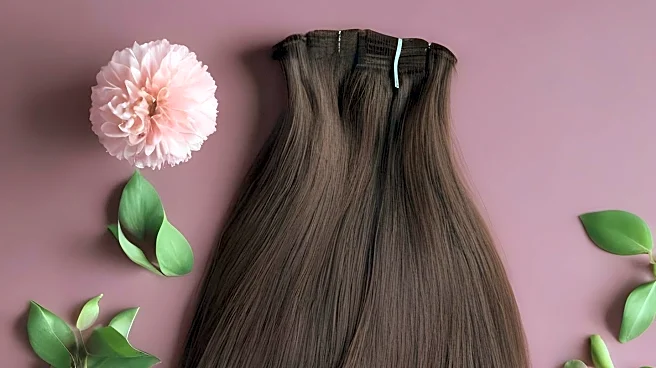What's Happening?
Hair texture is a crucial aspect of personal grooming that many individuals misunderstand, according to experts. Jae-Manuel Cardenas, a senior stylist at Ollin NYC, notes that people often confuse hair thickness with texture, leading to improper care routines. Changes in hair texture can occur due to various factors, including age, hormonal changes, and styling practices. Lars Skjøth, a scalp-health expert, explains that hair follicles shrink with age, resulting in thinner and more porous strands. This can lead to frizz and changes in curl patterns. The importance of understanding one's hair type is emphasized by Miko Branch, co-founder of Curve Salon, who suggests using personal observations alongside online resources to determine hair type. The classification system developed by Andre Walker in the 1990s is still widely used, but experts advocate for a broader definition that includes texture, density, and porosity.
Why It's Important?
Understanding hair texture is vital for selecting appropriate hair care products and routines, which can significantly impact hair health and appearance. As the beauty industry moves away from one-size-fits-all solutions, personalized hair care is becoming more prevalent. Brands like Prose and Pattern Beauty are leading initiatives to improve textured-hair education and offer products tailored to diverse hair types. This shift towards personalized care reflects broader cultural changes in beauty standards, promoting inclusivity and self-awareness. Proper understanding of hair texture can help individuals manage issues like thinning and dryness, particularly as they age, enhancing their overall confidence and satisfaction with their appearance.
What's Next?
The beauty industry is expected to continue evolving towards more personalized and inclusive hair care solutions. Companies are likely to expand their product lines to cater to a wider range of hair types and conditions. Educational initiatives, such as those by L’Oréal Professional Products Division, aim to improve industry standards for textured-hair care. Consumers may increasingly seek out products and services that offer tailored solutions based on detailed assessments of their hair characteristics. This trend could lead to more innovative products and techniques designed to optimize hair health and aesthetics.
Beyond the Headlines
The focus on hair texture and personalized care highlights broader societal shifts towards embracing diversity and individuality. This movement challenges traditional beauty norms and encourages people to celebrate their natural features. It also underscores the importance of self-awareness and continuous learning in personal grooming. As individuals become more informed about their unique hair needs, they can make better choices that align with their lifestyle and values, fostering a sense of empowerment and self-expression.















